Event professionals will agree that a strong event security plan is a must. Today, only 67% of event organizers reported that they had explicit language around safety and security in their meetings and events policy.
Knowing what situations pose the greatest risk to your attendees can mean the difference between a safe experience and a situation gone wrong. Minimize risk and keep attendees safe with our top tips for increasing security, promoting safety, and driving participation at your security-focused event.
10 Event Security Best Practices
1. Partner with event security companies that will evaluate your meeting's safety needs.
Event security services provide peace of mind, especially for large conferences, events, and expos. Pick a security company that will help you ensure safety and security for every important event decision. As a rule of thumb, strive to hire at least one security guard for every 100 guests.
You’ll also want to consider the type of event you are hosting, as different events require different security needs. A music festival or sports game draws in thousands of people. This requires more security. In contrast, a small business event with 50 delegates needs less security.
2. Improve badge security with a holographic overlay.
Name badges are a critical identifier to ensure your event is properly credentialed—not just for attendees, but also for exhibitors, security staff, and third-party vendors. Always require everyone to wear their credentials, no matter their distinction. Uninvited attendees will often excuse their lack of event badge by saying they’ve left it in their hotel room or car.
One of the easiest ways to improve safe event access is by adding a holographic overlay to conference badges, VIP badges, and backstage passes. Not only will your badges be virtually impossible to duplicate, but they'll also give peace of mind to attendees.
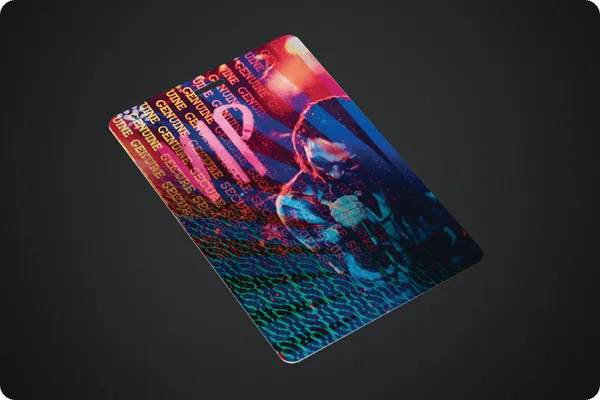
Add a holographic element to event badges to increase event security and prevent counterfeiting.
3. Evaluate top event risks to prepare for any situation.
Keeping everyone safe at an event is a must and, arguably, one of the greatest responsibilities any event organizer has. Conducting an event risk assessment will help you identify potential hazards that could occur at your event, calculate the possibility and levels of risk, and analyze what could happen if a hazard occurs.
We suggest creating a system to assess the threat level of identified hazards at your event. This event risk assessment matrix, for instance, will help you prioritize risks and hazards, then create a security plan based on your assessment.
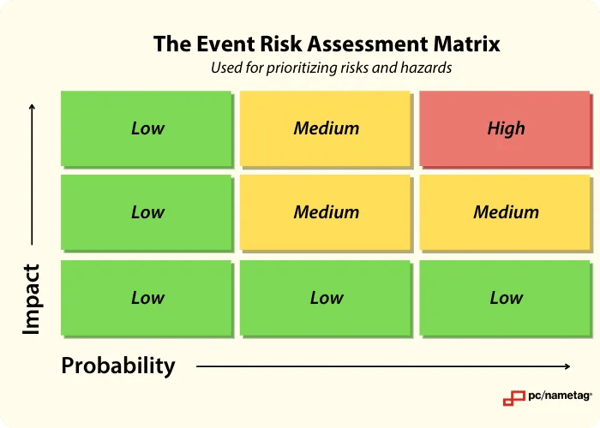
4. Create event access control with security checkpoints.
One of the easiest ways to protect people and property from security threats is to prevent unauthorized access to your event. Start by setting up your registration desk in the event venue’s lobby or main doorway. This way, if an uninvited person tries to enter your event, they’ll be stopped before they reach the crowd.
Your security team can also handle a variety of tasks, from checking guest IDs to escorting VIPs, keynote speakers, and top corporate executives to where they need to be. They can also help keep emergency exits clear of obstructions and monitor for suspicious activity.
Additionally, it's important to have a clear plan for managing the flow of guests. Use signage to direct attendees to the registration area and provide information about the event layout. This not only allows the guests to navigate the venue, but also allows security personnel to easily identify anyone who seems lost or out of place.
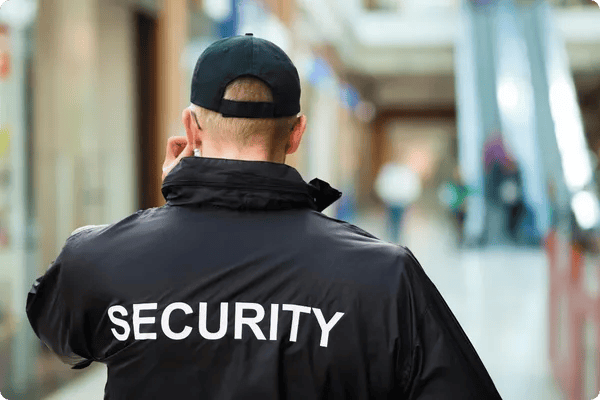
5. Use facial recognition technology to improve the event registration process.
Facial recognition systems have the power to improve the event registration process while also improving security. This high-tech solution will set the tone for your event and create a more enjoyable experience for everyone. Benefits of facial recognition software at events include the following:
- Cut down on security personnel labor costs by automating photo identification.
- Speed up event registration and funnel crowds into your venue faster.
- Eliminate human-powered screening processes, which can result in unintentional errors.
Check out how one company uses facial recognition to allow event attendees to check in and print full-color badges instantaneously:
6. Boost event risk management with venue security best practices.
Incorporate a variety of safety and security techniques, like a combination of metal detectors, bag checks, uniformed security officers, and camera surveillance. Your guests will appreciate not having to worry about their personal safety.
Additionally, work with the venue manager and security personnel to identify all exit and entrance points, then make sure your event staff is aware of them. Outdoor events should use temporary barricades and fencing to create strict perimeter boundaries.
Don’t forget to ask your venue how they plan to allow emergency responders access during your event if they need to, and how they will notify you about the situation.
It's also essential to establish a clear communication plan for your event. Ensure that all staff members are equipped with radios or mobile devices to facilitate quick and efficient communication. Conduct a briefing before the event to go over emergency procedures, including evacuation routes and protocols for handling various situations, such as medical emergencies or severe weather.
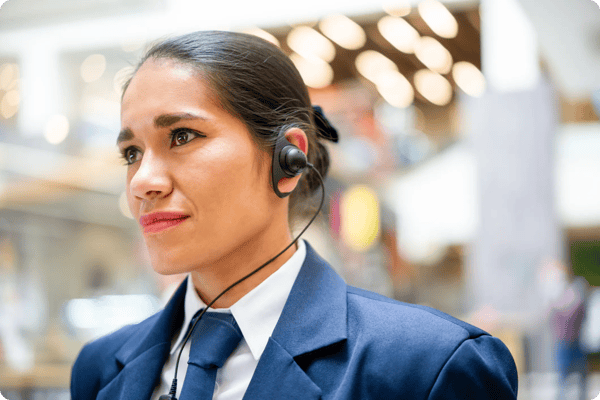
7. Improve crowd safety by decreasing queuing.
Depending on the size of your audience, you’ll need to create a basic event safety plan to keep everyone secure. Start by ensuring there are enough staff members to limit queues, especially in your event registration area.
Next, ensure that your event safety plan includes instructions on how to keep guests calm during any situation. This includes providing adequate event signage throughout your venue to prevent frustration, as well as working with your venue and local emergency teams to plan evacuation procedures.
Lastly, provide adequate space between checkpoints like giveaway tables, exhibitor booths, refreshment stations, and entertainment stages to prevent crowding. Decrease queuing with RFID wristbands or RFID Fanfold Direct Thermal Stock for name tags.
Check-in attendees faster with RFID wristbands, a technology that increases event security while also digitizing your event. pc/nametag also offers RFID fanfold direct thermal paper stock for name tags.
8. Train event staff in safety and security best practices.
Research, Implementation, Training, and Practice: These are the four critical components of any safety and security planning process. As a planner, you want to empower your team to know how to handle any unanticipated situation. This way, your staff can serve as an extension of your surveillance team, while also directly interacting with attendees.
Start by establishing a mentoring program for on-the-job training of new or replacement staff. Follow training with a test or quiz to determine your program’s effectiveness. Next, conduct safety and security training prior to every event. And lastly, encourage staff to review procedures on a regular basis and maintain training records.
- PRO TIP: Establish an events handbook that clearly explains rules and guidelines. This should include needed skills and required training on basic security procedures like access control, situational awareness, attendee screening, CPR and AED training, and more.
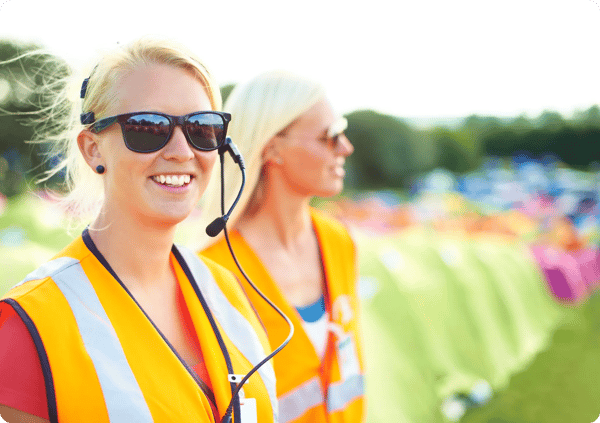
9. Instruct event staff to spot and report suspicious activity.
While every experienced security team knows how to spot a suspicious situation, your event staff may not. That’s why it’s a good idea to learn how to identify and notify security if your team sees a concerning problem. For instance, do they see an attendee excessively loitering or surveying the layout of the venue? Do they see a vehicle parked in an odd location, an unattended package, or an open window that should not be open?
People who plan to disrupt an event often watch security personnel closely, continually check for security cameras and look for unguarded entrances. Your team needs to know how to be on the lookout for suspicious activity and how to report it to the right law enforcement agencies. It's never a bad idea to be overly cautious.
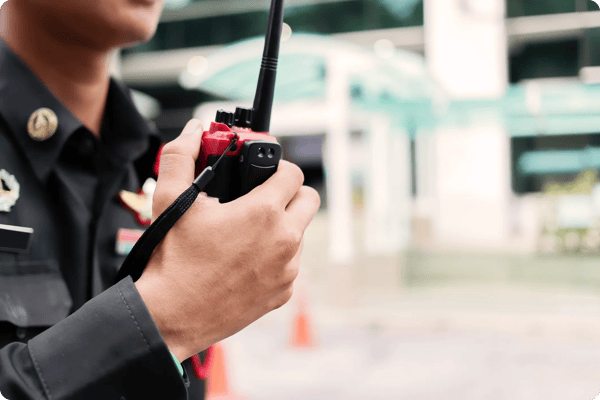
10. Protect event data using cybersecurity best practices.
Event threats don’t just come in physical form; they also come in digital form. Make protecting data a top priority at your event. The last things you want to worry about are hackers or unauthorized users inadvertently gaining access to sensitive information and data.
Data breaches and identity fraud are two major concerns for event organizers. Make your next event as safe and secure as possible by implementing the following event cybersecurity best practices:
Keep your registration process simple by only asking for pertinent information, or relying on an encrypted system.Remember, don’t ever store credit card data with user data. Credit card data should always be stored in a separate encrypted storage solution. |
|
Password-protect your event’s Wi-Fi service and use enterprise-level encryption such as WPA2(AES) or WPA3.This will help safeguard against security threats by keeping unwanted parties off the network. Many of these features are commonly built into most routers and access points, including home units. |
|
Share your event’s Wi-Fi password in a secure location.We suggest printing it on the back of your custom event badge so attendees have access to it at all times. You may also choose to print the password on a handout in custom event registration packets, or within your secure event app.
|
|
Use multiple layers of security through wireless encryption and hard drive encryption.Use built-in Windows firewalls for a strong security regime that will keep most potential attackers out. |
|
Have IT professionals run security measures on the network to make sure no malicious parties can use it to steal data from guests’ devices.If the venue provides a Wi-Fi network, ask to review their cybersecurity protocols. You'll want to ensure that devices logged into the network can’t access other devices on the same network. |
By following these data security best practices, you’ll be better prepared to safeguard your organization, your attendees, and everyone in between.
Corporate Event Security Resources
People love events. But what they love even more is knowing that their experience will be safe, secure, and enjoyable. It’s up to meeting planners and venue managers to team up together to ensure the health, safety, and security of every guest, no matter the type of event — and we’re here to help.
First, read our comprehensive resource on Safe Meetings 101: The Guide to Event Safety and Security Planning to equip yourself with the tools and knowledge you need to be successful.
Next, shop safety- and security-related event supplies by pc/nametag, including name badges with optional security features, RFID wristbands, and badge ribbons for attendee distinctions (I.e. “security,” “vendor,” “speaker,” etc.)
Lastly, download The Meeting Planner’s Event Safety Plan Checklist, a resource designed to help you collect and manage emergency contacts, vendor and supplier information, and risk management tasks:



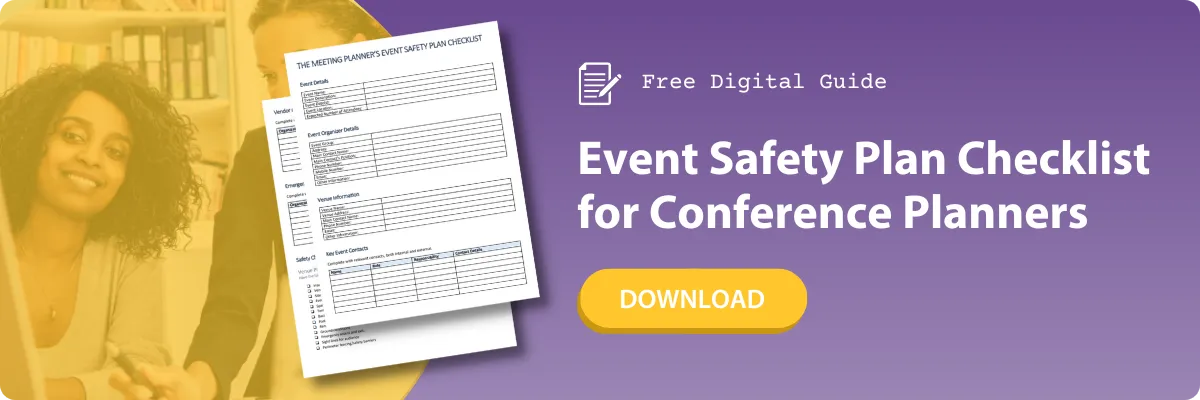
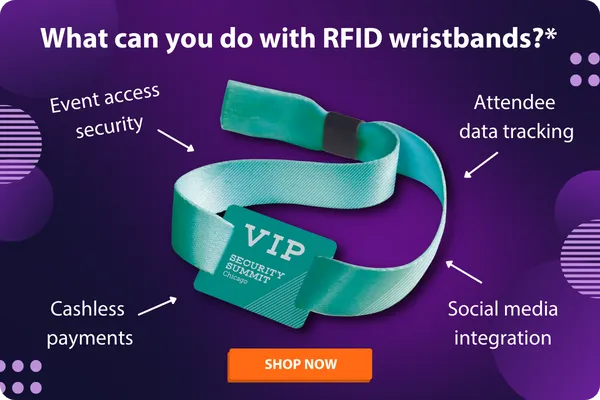
Submit a Comment